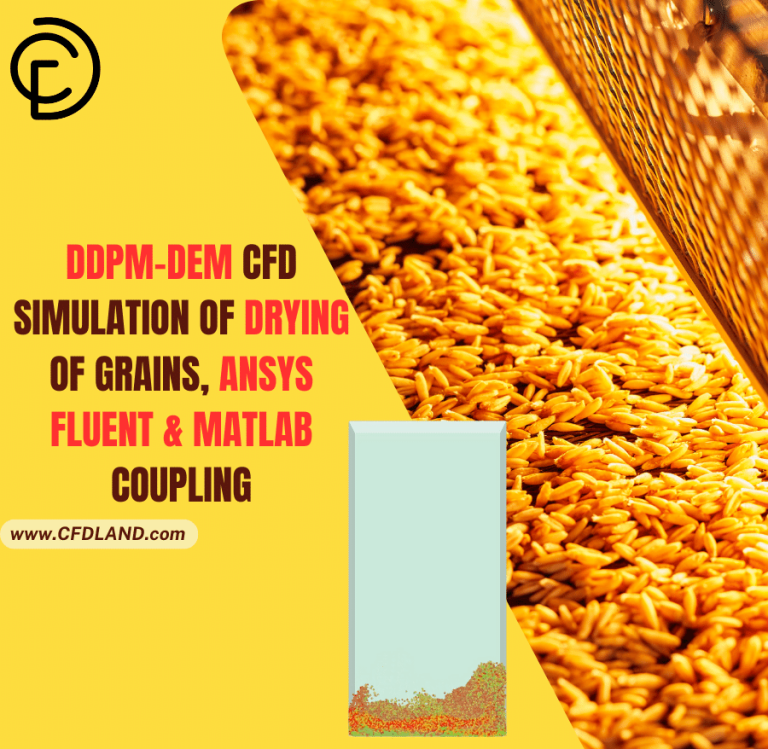Nusselt Number Fluent Validation | A CFD Study of Convective Heat Transfer in a Tube
Nusselt Number Fluent Validation | A CFD Study of Convective Heat Transfer in a Tube
- Upon ordering this product, you will be provided with a geometry file, a mesh file, and an in-depth Training Video that offers a step-by-step training on the simulation process.
- For any more inquiries regarding the product, please do not hesitate to reach out to us at info@CFDLAND.com or through our online support assistant.
€360 Original price was: €360.€180Current price is: €180.
Heat transfer inside tubes is one of the most fundamental processes in thermal engineering, forming the basis for countless industrial applications like heat exchangers, power plant boilers, cooling systems, and solar collectors. The efficiency of these systems is determined by how effectively heat is transferred from the tube wall to the fluid flowing inside. This process is known as convection, and the key parameter used to measure its effectiveness is the Nusselt number, a dimensionless value that compares the convective heat transfer to the conductive heat transfer. A higher Nusselt number signifies more efficient convective cooling or heating.
To design and optimize such systems, engineers rely on powerful simulation tools. A Tube heat transfer CFD analysis allows for a detailed investigation of fluid flow and thermal distribution without the need for costly and time-consuming physical experiments. This project details a CFD VALIDATION study focused on this very topic. The primary goal is to simulate the thermal performance inside a heated tube and calculate the Tube nusselt number CFD. To ensure the accuracy of our simulation, the results will be compared against the data presented in the reference paper, “Thermal performance analysis of solar parabolic trough collector using nanofluid as working fluid: A CFD modeling study [1]”.
- Reference [1]: Ghasemi, Seyed Ebrahim, and Ali Akbar Ranjbar. “Thermal performance analysis of solar parabolic trough collector using nanofluid as working fluid: A CFD modelling study.” Journal of Molecular Liquids222 (2016): 159-166.

Figure 1- The solar collector system from the reference paper [1], from which the heat pipe geometry is derived.
Simulation Process – CFD Modeling of Tube Heat Transfer in ANSYS Fluent
The simulation process began with the precise creation of the geometry in ANSYS Design Modeler. To optimize computational resources, the model took advantage of the pipe’s symmetrical nature, and only a 2D axisymmetric representation was built. A high-quality, fine-structured mesh was then generated, with a higher density of elements near the tube wall to accurately capture the thermal boundary layer, which is critical for a correct heat transfer coefficient calculation.
The setup for this Tube heat transfer Fluent simulation was configured inside ANSYS Fluent. The energy equation was enabled to solve for heat transfer. A constant heat flux was applied to the outer wall of the tube to replicate the heating conditions. The most important post-processing task was the calculation of the nusselt number Fluent. This is not a direct output; it must be carefully defined. The software was set up to monitor and calculate the surface heat transfer coefficient, the fluid’s bulk temperature, and the wall temperature. These values were then used in a custom field function to calculate the Nusselt number based on its definition (Nu = hL/k), ensuring a reliable and accurate result for our validation study.

Figure 2- The structured mesh used for the tube and internal flow, with refinement at the wall for boundary layer accuracy.
Post-processing – Validating Nusselt Number and Thermal Performance
The primary objective of this project was the successful validation of our numerical model against published experimental or numerical data. The simulation results achieved this goal with excellent accuracy. The CFD model calculated an average Nusselt number of 271.5. When compared to the value of 245 reported in the reference paper [1], our simulation shows a deviation of only 10%. This represents a very strong agreement and successfully validates our CFD methodology for analyzing Convective heat transfer CFD in a tube. This level of accuracy gives us high confidence that the simulation is correctly capturing the underlying physics of the flow and heat transfer.
| Reference Paper | CFD Simulation | Error | |
| Nusselt Number | 245 | 271.5 | 10% |
The temperature contour in Figure 3 provides a clear visual confirmation of the thermal dynamics inside the pipe. The fluid enters at a uniform temperature of 320K and is progressively heated as it flows along the tube, with the temperature increasing along both the wall and the centerline. This distribution shows the development of the thermal boundary layer, where the temperature gradient is steepest near the wall. The simulation shows a maximum temperature of 329.965K on the tube surface near the outlet, representing a total temperature rise of nearly 10K. This detailed temperature field is precisely what drives the convective heat transfer. The accurate capture of these gradients by our Tube heat transfer CFD model is the reason for the successful calculation of the heat transfer coefficient and, ultimately, the validated Nusselt number.

Figure 3: Temperature distribution from the CFD analysis, showing the progressive heating of the fluid along the tube.
We pride ourselves on presenting unique products at CFDLAND. We stand out for our scientific rigor and validity. Our products are not based on guesswork or theoretical assumptions like many others. Instead, most of our products are validated using experimental or numerical data from valued scientific journals. Even if direct validation isn’t possible, we build our models and assumptions on the latest research, typically using reference articles to approximate reality.
Yes, we’ll be here . If you have trouble loading files, having technical problems, or have any questions about how to use our products, our technical support team is here to help.
You can load geometry and mesh files, as well as case and data files, using any version of ANSYS Fluent.
€265 Original price was: €265.€135Current price is: €135.

€245 Original price was: €245.€185Current price is: €185.

€120 Original price was: €120.€65Current price is: €65.

€245 Original price was: €245.€199Current price is: €199.

€200 Original price was: €200.€125Current price is: €125.

€245 Original price was: €245.€185Current price is: €185.



















Reviews
There are no reviews yet.